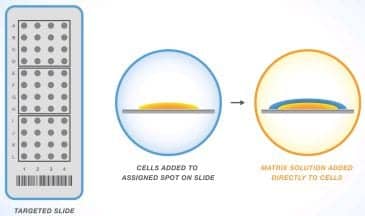Summary: Researchers at the University of Liverpool have developed a groundbreaking Paper-Arrow Mass Spectrometry (PA-MS) technique to quickly and non-invasively assess paracetamol levels from a single drop of saliva.
Takeaways:
- Innovative Testing Method: The PA-MS technique uses a saliva sample on paper to accurately measure paracetamol levels, offering faster and more resource-efficient diagnostics compared to current methods.
- Critical Overdose Management: With paracetamol overdose leading to 50,000 hospital admissions annually in the UK, this technology provides a timely solution to administer life-saving treatments like N-acetylcysteine (NAC) within the critical eight-hour window.
- Broader Healthcare Potential: Beyond overdose detection, the technique paves the way for expanded point-of-care applications, improving diagnostics and outcomes across emergency and routine clinical settings.
A research team led by the University of Liverpool has developed an innovative new technique to rapidly assess paracetamol levels from saliva.
A New Mass Spectrometry Technique
In a paper published in the journal BMC Medicine, the team demonstrate the clinical validity of a new Mass Spectrometry technology-based technique that can test a tiny drop of saliva on a piece of paper for levels of paracetamol.
Called Paper-Arrow Mass Spectrometry (PA-MS), the patent-pending technique was found to offer enhanced analytical performance while requiring less time, resources, and clinical involvement than current tests.
Impact of Paracetamol
Paracetamol is the most consumed medicine globally and its accessibility contributes to frequent misuse and overdose. Approximately 100,000 cases of paracetamol overdose are reported in the United Kingdom each year, leading to 50,000 hospital admissions due to liver toxicity. If not treated quickly, paracetamol overdoses can lead to severe outcomes, including liver failure, transplantation, or even death.
N-acetylcysteine (NAC) is a medication that is used to treat paracetamol overdose and is effective in preventing acute liver injury (ALI), however, it is time sensitive and most effective if administered within eight hours.
Harnessing Saliva Samples
The research team tested the technique using both saliva and plasma samples from volunteers who had ingested paracetamol and saliva was found to be the preferred sample method.
The study is in collaboration with Alder Hey NHS Foundation Trust, Royal Liverpool University Hospitals NHS Foundation Trust, and Liverpool School of Tropical Medicine.
“This study demonstrates successful testing of the new PA-MS test in a clinical environment and lays the foundation for advancing point-of-care testing across emergency and routine clinical settings,” says Simon Maher, PhD, an expert in Mass Spectrometry Technologies with the University of Liverpool’s Department of Electrical Engineering and Electronics. “This innovation represents a significant step forward in ambient ionisation mass spectrometry techniques, with the potential for broad application in clinical diagnostics.”
Professor Dan Hawcutt, a clinical pharmacologist and director of research at Alder Hey Children’s Hospital, and director of the NIHR Alder Hey Clinical Research Facility, added: “The speed, simplicity, and efficiency of this new technology has the potential to provide faster diagnosis, better patient outcomes, and cost savings for healthcare systems.”
The paper `Rapid and non-invasive analysis of paracetamol overdose using paper arrow-mass spectrometry: a prospective observational study’ is published in BMC Medicine.
The foundational development of this technology was funded by the EPSRC Healthcare Technologies programme and was published in the Royal Society of Chemistry (`Emergency diagnosis made easy: matrix removal and analyte enrichment from raw saliva using paper-arrow mass spectrometry – Analyst’).
Further Reading
“This research, which was supported by EPSRC, represents a significant breakthrough in the rapid and accurate quantitation of paracetamol,” says Dr Robert Felstead, deputy director of healthcare technologies at EPSRC. “Given the high incidence of paracetamol overdose and its severe consequences, this innovative technology offers a fast, non-invasive and cost-effective solution that can greatly enhance patient care and outcomes.”
The University of Liverpool is seeking to translate this technology into a bespoke multiplexed diagnostic tool for rapid OD and liver injury assessment.
Featured image: New saliva test can rapidly identify paracetamol overdose. Photo: Dr Simon Maher, University of Liverpool





